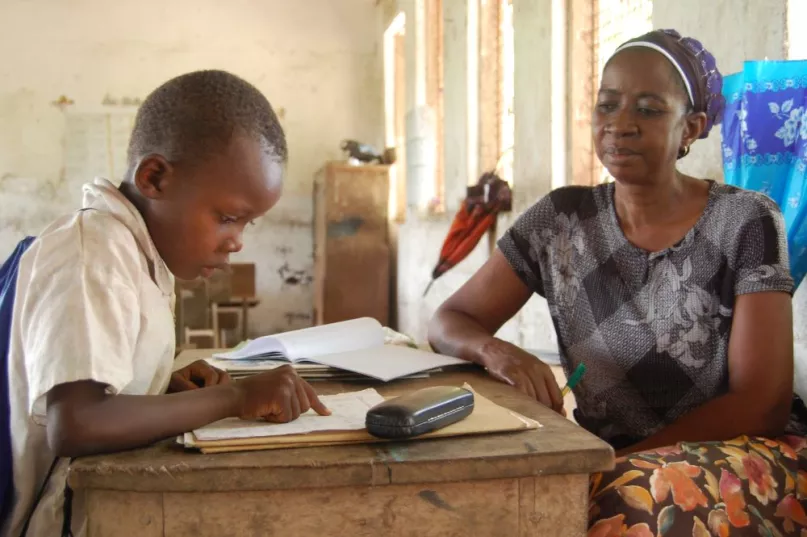What Can Edufinance Learn From Microfinance?

This is the final post in a three-part blog series summarizing Grassroots Capital Managements’ research and investment analysis on “edufinance” (education finance). In the first post, we described the edufinance sector and its relevance to impact investing. Next, we laid out the reasons edufinance investing promises to be a significant investment opportunity and highlighted some of the challenges that might explain the huge credit-gap seen in the market today. In this post we reflect on the experience of investing in an adjacent impact investing space, microfinance. We draw lessons from two decades of microfinance investing experience for the benefit of impact investors and managers in the edufinance space.
Edufinance promises to be the bold new frontier for impact investing. This sector encompasses lending to private schools and colleges for infrastructure and materials, loans to parents for school fees and credit for school suppliers. Low-cost schools accessible to families of very modest means comprise nearly half of the over one million private educational institutions in developing countries. The rapidly expanding youth population in developing countries is driving demand. Investors motivated by the promise of education, and others looking to diversify from microfinance, will find much to like in edufinance which, by some estimates, is a $25-30 billion investment opportunity.
The recent excitement over the investment potential of edufinance will remind long-time impact investors of similar growth predictions for microfinance not too long ago. Some of these came true, and some did not, but institutional microfinance investment is now a $15 billion industry. And there is much that edufinance can learn from microfinance’s story.
Edufinance and microfinance – are they comparable?
These two impact investing sectors have some important parallels:
- Both are critical to achieving UN SDGs. Both edufinance and microfinance can contribute substantively to achieving the UN Sustainable Development Goals (SDGs), including #1 (no poverty), #4 (quality education), #5 (reducing gender gap in education can lead to improved gender equality), #8 (decent work and economic growth), and even #13 as better access to education for girls has also been identified as an important factor in combatting climate change.
- They cater to the same customer base. Edufinance and many microfinance companies channel capital into densely populated urban or peri-urban residential communities, usually low-income families overlooked by the formal financial sector.
- Both can absorb significant amounts of capital. Edufinance and microfinance rely on financing businesses or households, and therefore both sectors can absorb huge amounts of capital. For example in Pakistan, a study of low-cost schools estimated that demand for edufinance could exceed that of the country’s entire microfinance sector.
- Both involve lending activities that started in a regulatory vacuum: When microfinance organizations first came on the scene thirty years ago there were no specific regulations for microlending. A similar gap exists in regulations overseeing edufinance companies in many countries today.
What can edufinance investors and managers learn from microfinance?
Based on two decades of investing in microfinance, and the last two years spent researching and investing in edufinance, here are our three key take-aways to guide the aspiring edufinance investor and manager:
- Lend transparently and responsibly. Edufinance companies must be transparent about whom they’re serving. Are the borrowers really low-cost schools that are adding classrooms to reduce the number of out-of-school children? Is the company really providing substantive inputs to schools that can lead to improved learning outcomes for children? Board members and investors are already raising eyebrows over how much of edufinance is really reaching low-cost schools.
The microfinance sector went through a similar cycle of big hype followed by heavy backlash when evidence did not back up claims that it could solve global poverty. Later, the sector pivoted towards financial inclusion, a more modest but credible goal, and devoted substantial resources to documenting progress towards clearly articulated goals. Learning from this experience, edufinance companies should clearly define whom they are reaching and collect evidence on how they are improving educational outcomes.
- Be proactive with regulators. During our two-year edufinance research we visited regulators such as Ministries of Education, Central Banks and Securities and Exchange Commissions in Asia, Latin America and Africa. In nearly all cases we found strong support for financing private education, but existing rules and licenses for operating an edufinance business were either not suitable or non-existent. First movers are taking advantage of this regulatory vacuum to grow rapidly. While this may seem conducive to growth, lack of regulatory oversight in the long term usually leads to chaos, with a few bad actors overstepping the line followed by heavy regulatory action that ultimately crushes the industry rather than just regulating it.
Once again, we can learn from the experience of the microfinance sector. Before appropriate regulations had been developed for microfinance, in some countries, MFIs continued operations under the radar, shying away from regulators instead of engaging with them. This stance eventually led to a regulatory backlash in many countries.
Edufinance companies would do well to engage with the regulator proactively from the start, and partner with them to develop suitable regulations. Some edufinance clients have already come under regulatory scrutiny for charging high school fees. In Pakistan and India, the State has intervened to curb private school fee increases. However, in Nigeria, a leading voice in private education has just been appointed to lead the Lagos State education department. This opens a window for edufinance businesses to work with the regulator to develop supportive industry norms and oversight.
- It’s a finance business focused on education, not the other way around. Low-cost private schools that are financially excluded require immense financial and non-financial support (e.g. teacher training, curriculum development) to deliver quality education. Edufinance businesses may be tempted to meet these needs by adding on other non-financial services.
MFIs also faced a similar choice, and some chose to go that route, for example by selling mobile phones, solar panels and sewing machines on credit. But when product manufacturers staffed their service teams inadequately, MFI staff were left to answer for product quality issues. Loan officers were stuck between focusing on collections or acting as salespeople, leading to a loss of credit discipline and ultimately a breakdown in customer trust. However, those MFIs that kept their focus only on financial services were able to build a strong foundation that could withstand industry shocks, far outgrowing the competition.
Edufinance businesses should first solidify their finance business before taking on any non-financial services. Doing so should also keep regulators happier during this nascent stage while the industry is not yet well-regulated.
Learn from microfinance’s mistakes, and go forth and prosper!
Edufinance offers impact investors a new opportunity to deploy capital at scale and address a pressing need facing hundreds of millions of families around the world. While edufinance has its own particularities, the business shares a great deal with microfinance. Taking advantage of the huge pool of hard–won experience built by the microfinance sector over 30-plus years can help the edufinance sector avoid missteps and greatly accelerate its growth and success.



Microfinace services providers should continue to use MFIs as a tool to enhance the total well being of the people at the base of the pyramid. These include both physical, social, economic and even the spiritual lives of people. A sound mind lives in a sound body.
Thank you for elevating the dialogue around education finance as a significant opportunity and referencing our research in Opportunity EduFinance's "$24 Billion Opportunity" report. Our report and current network of 46 financial institution partners already lending to this sector draws similar conclusions, finding a massive yet under-financed affordable private school market. Financial institutions would be well served to re-examine these schools from the lens of a sustainable SME business model, as you wrote.
In a recent webinar we hosted with three financial institution partners, discussion closely mirrored several points you made in the 2nd blog.
- Opportunity Bank Uganda has proactively addressed a challenge of school property owned by the kingdom by establishing an agreement directly with the kingdom for collateral.
- In Pakistan, the vacuum of FIs willing to lend at SME levels to schools is starting to be seen as an opportunity. Taleem Finance Company Limited was recently established to solely focus on education lending in Pakistan.
- The National Association of Microfinance Banks (NAMB) in Nigeria has a specific focus on education financing, and is encouraging association members to allocate a portion of their portfolio to education finance, supported by Opportunity EduFinance's technical assistance.
Additional insights by our webinar panelists are available here: https://bit.ly/2WV08UN
Leave a comment